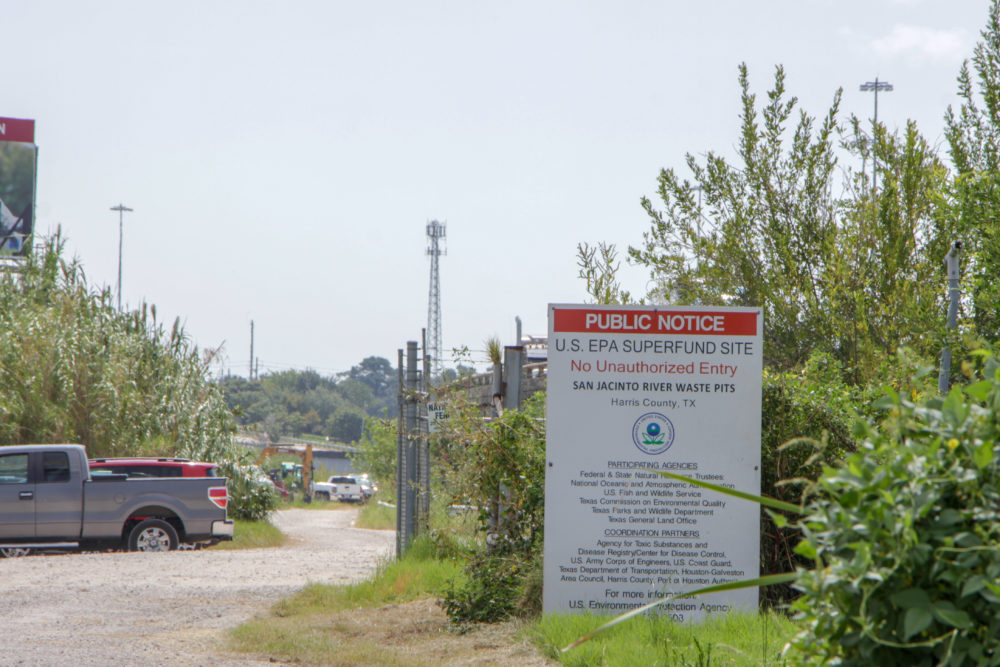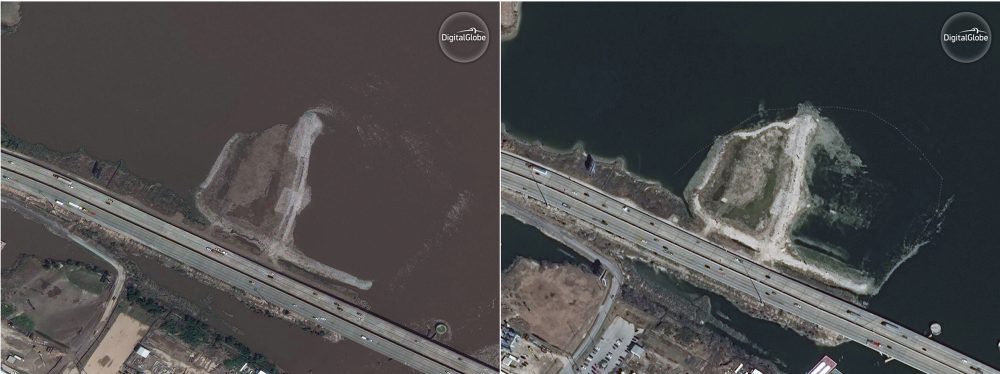
The Environmental Protection Agency has issued an order requiring International Paper Company to begin the cleanup process of the southern portion of the San Jacinto Waste Pits, following years of delays in finalizing plans for the toxic site.
The pits, which were built in the 1960s to store hazardous waste from a nearby paper mill, contain a group of cancer causing chemicals called dioxins. In 2008, the pits were added to the EPA's Superfund program, which targets hazardous waste sites for clean up.
Since then, the path to remediation has been slow. Originally, a temporary cap was placed on the waste pits to protect the river from contamination, but after flooding from Hurricane Harvey damaged that cap in 2017, the EPA approved a plan to remove the waste from the site.
Jackie Medcalf, the founder of the Texas Health & Environment Alliance (THEA), said it's been a long process since that decision.
"Here we are almost four years later, just getting to the point where we are looking at construction in the near future," she said. "This recent order literally brings us that much closer to the waste being removed, and this can’t happen fast enough for the communities."

The two companies involved — International Paper Co. and McGinnes Industrial Maintenance Corp. — were originally supposed to submit a final cleanup plan in 2020. Those plans have been delayed several times, most recently in April when the EPA gave an extension due to technical issues with the northern portion of the site, which is partially underwater.
Now, the agency plans to split the clean-up process into two parts, allowing work to begin on the southern impoundment, while plans for the larger, more complicated, northern impoundment are finalized.
"EPA intends to address the contamination on the northern portion of the site on a separate and independent timeline," the agency wrote in an update.
Remediation work on the southern impoundment likely won't start until the fall of 2022 due to the time needed to secure contractors and to avoid excavating during hurricane season, according to the EPA.
The clean-up process for the southern impoundment — roughly 20 acres in size — will involve digging 10-feet deep to remove about 50,000 cubic yards of waste.
The process is estimated to cost nearly $10 million, with International Paper required to foot the bill. The order from the EPA outlines potential penalties of $59,017 per day should the company not comply.
Medcalf said THEA will continue to closely monitor the process to make sure it's done in a safe way.
"We’re going to be watching carefully to make sure that what’s actually happening on the ground is what has been approved by the EPA," said Medcalf. "It’s important that the folks on the ground, the local communities are continuing to play the watchdog role that so many of us have for all these years."

 80 °F
80 °F